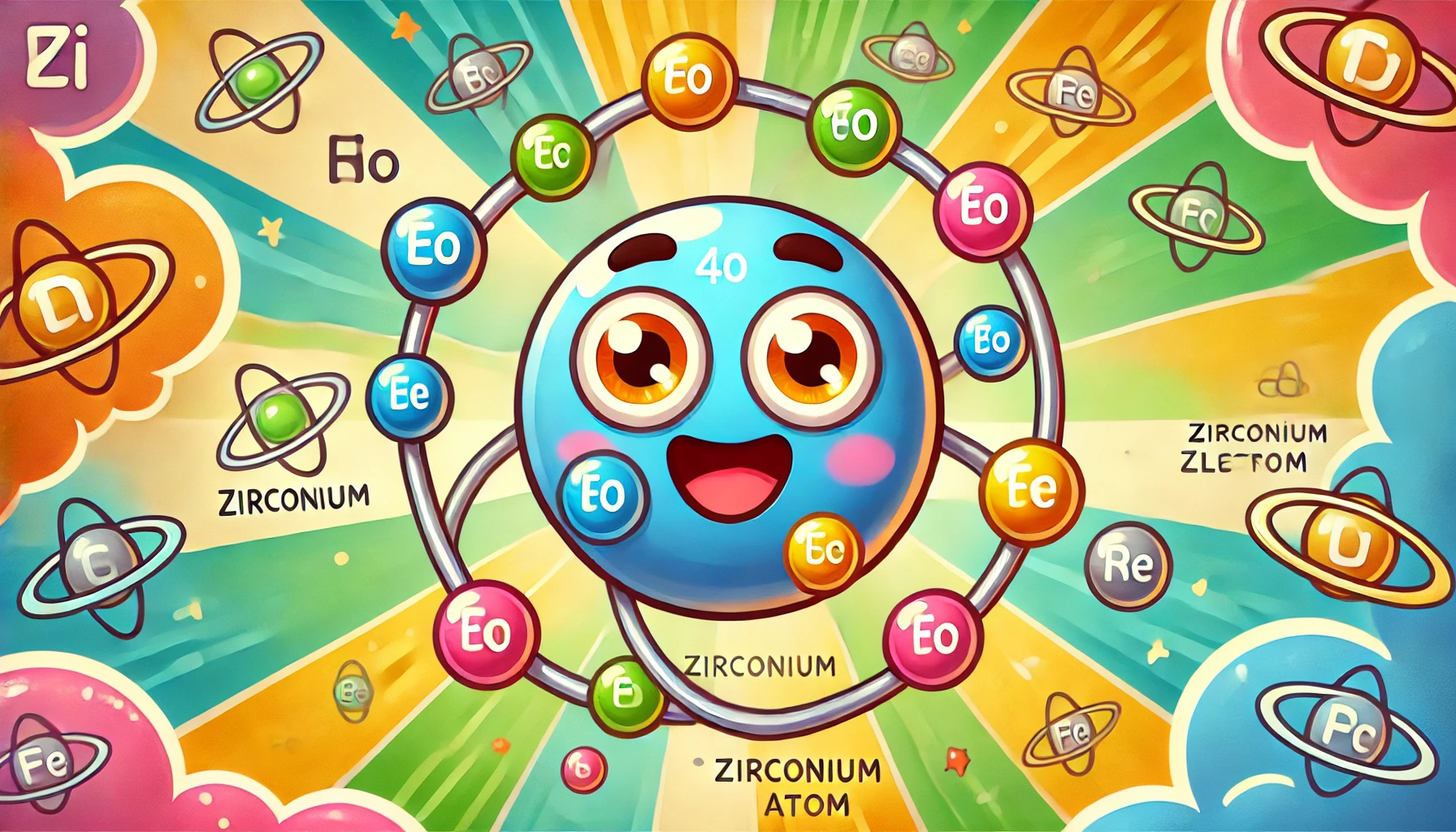Understanding Zirconium: Properties, Uses, Health Risks, and Fascinating Facts
Understanding Zirconium: Properties, Uses, Health Risks, and Fascinating Facts
Table of Contents
- Introduction to Zirconium
- Properties of Zirconium
- Uses of Zirconium
- Health Risks of Zirconium Exposure
- Interesting Facts about Zirconium
- Environmental Impact of Zirconium
- Conclusion
- References
Understanding Zirconium: Properties, Uses, Health Risks, and Fascinating Facts
Introduction to Zirconium Zirconium is a chemical element with the symbol Zr and atomic number 40. It is a transition metal known for its corrosion resistance, high melting point, and versatility in various industrial applications. This article explores the properties, uses, health risks, and interesting facts associated with zirconium, providing a comprehensive understanding of this valuable element.
Properties of Zirconium Zirconium is characterized by several distinct physical and chemical properties.
Physical Properties
- Appearance: Zirconium is a lustrous, gray-white, strong metal.
- Density: The density of zirconium is 6.52 g/cm³.
- Melting Point: Zirconium has a high melting point of 1,855°C (3,371°F).
- Boiling Point: The boiling point of zirconium is 4,409°C (7,968°F).
Chemical Properties
- Reactivity: Zirconium is highly resistant to corrosion due to the formation of a stable oxide layer. It is inert to most acids and alkalis but reacts with hydrofluoric acid.
- Compounds: Zirconium forms various compounds, such as zirconium dioxide (ZrO₂), zirconium chloride (ZrCl₄), and zirconium sulfate (Zr(SO₄)₂).
Uses of Zirconium Zirconium has numerous applications across different industries due to its unique properties.
Nuclear Industry
- Cladding for Fuel Rods: Zirconium is used as cladding for fuel rods in nuclear reactors due to its low neutron-capture cross-section and high corrosion resistance.
Ceramics and Refractories
- Zirconia: Zirconium dioxide (zirconia) is used in ceramics, dental implants, and refractory materials for its high melting point and thermal stability.
Chemical Processing
- Corrosion-Resistant Equipment: Zirconium is used in the manufacturing of chemical processing equipment, such as pumps, valves, and heat exchangers, due to its resistance to corrosive environments.
Jewelry and Decorative Items
- Cubic Zirconia: Synthetic cubic zirconia, a crystalline form of zirconium dioxide, is used as a gemstone in jewelry due to its diamond-like appearance and affordability.
Medical Applications
- Surgical Instruments and Implants: Zirconium’s biocompatibility makes it ideal for surgical instruments and implants, such as knee and hip replacements.
Aerospace and Defense
- Alloys: Zirconium is used in superalloys for aerospace and defense applications, providing high strength and resistance to extreme conditions.
Health Risks of Zirconium Exposure Zirconium is generally considered to have low toxicity, but there are some health risks associated with exposure to zirconium compounds and dust.
Inhalation and Ingestion
- Respiratory Irritation: Inhalation of zirconium dust can cause respiratory irritation, coughing, and shortness of breath.
- Gastrointestinal Issues: Ingestion of zirconium compounds can cause gastrointestinal irritation, including nausea and vomiting.
Skin and Eye Contact
- Skin Irritation: Direct contact with zirconium compounds can cause skin irritation and dermatitis.
- Eye Irritation: Exposure to zirconium dust or solutions can cause eye irritation and potential damage.
Chronic Exposure
- Lung Effects: Prolonged exposure to zirconium dust may lead to lung damage and other respiratory issues.
Interesting Facts about Zirconium Zirconium has several intriguing aspects that make it an interesting element.
Discovery
- Discovered in 1789: Zirconium was discovered by German chemist Martin Heinrich Klaproth in 1789. The element was isolated by Swedish chemist Jöns Jakob Berzelius in 1824.
Unique Properties
- Corrosion Resistance: Zirconium is highly resistant to corrosion, making it valuable in harsh chemical environments.
- Low Neutron-Capture Cross-Section: This property makes zirconium suitable for use in nuclear reactors, as it does not easily absorb neutrons.
Isotopes
- Stable Isotopes: Zirconium has five naturally occurring stable isotopes, with zirconium-90 being the most abundant.
- Radioactive Isotopes: Zirconium-93 is a radioactive isotope used in scientific research and industrial applications.
Environmental Impact of Zirconium Zirconium is not known to have significant environmental impacts, but its extraction and use should still be managed responsibly.
Natural Occurrence
- Abundance: Zirconium is relatively abundant in the Earth’s crust and is typically found in minerals such as zircon and baddeleyite.
- Mining: Extraction of zirconium from these minerals must be done with care to avoid environmental damage.
Industrial Waste
- Waste Management: Proper disposal of zirconium-containing industrial waste is crucial to prevent environmental contamination.
Conclusion Understanding zirconium, its properties, uses, health risks, and interesting facts provides valuable insight into this versatile element. While zirconium is generally safe with low toxicity, appropriate safety measures should be taken when handling zirconium compounds and dust. Its applications in the nuclear industry, ceramics, chemical processing, and medical fields highlight its importance in modern technology and industry.

<ⓒ WizardMedics (wizardmedics.com)>


